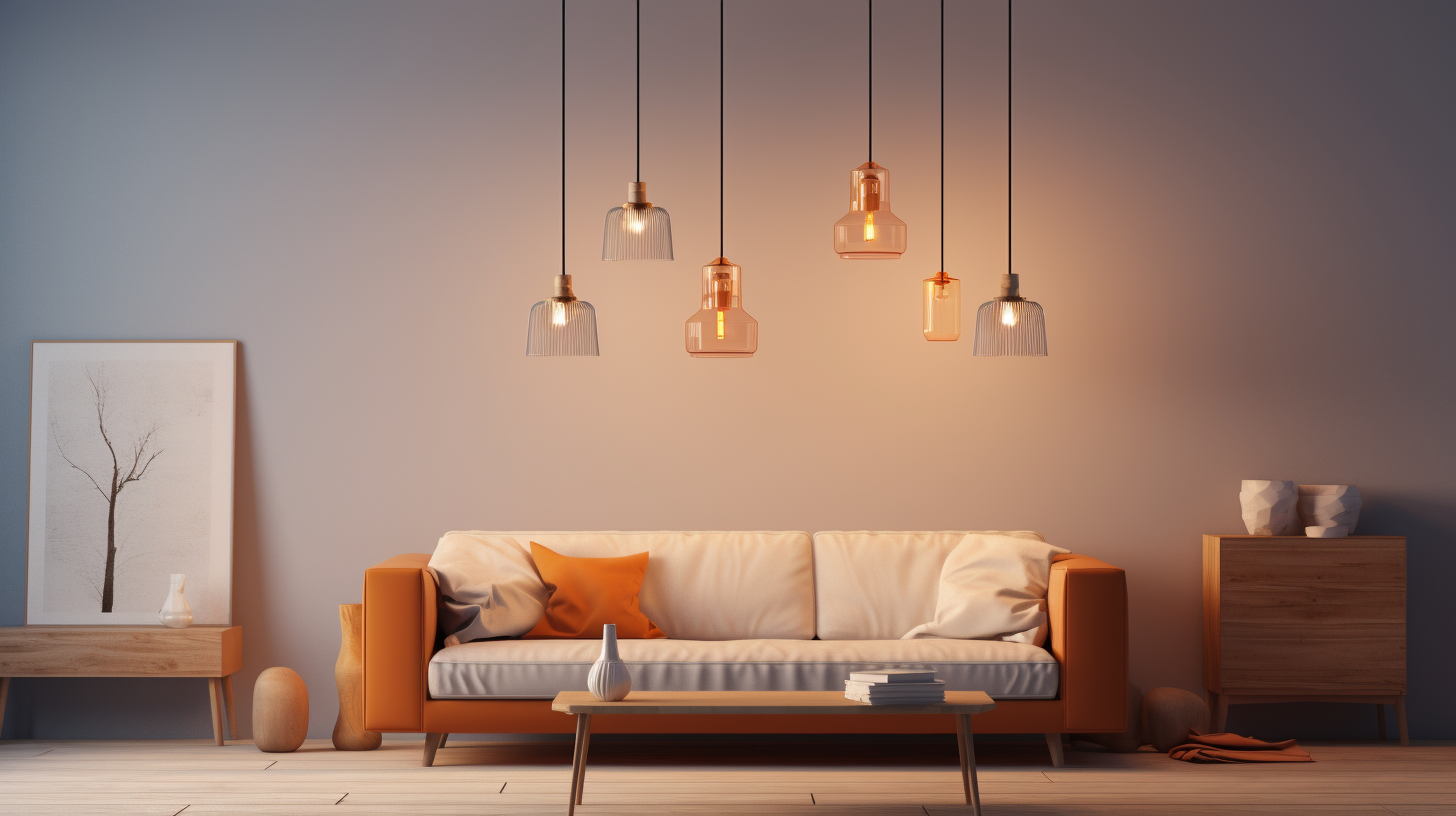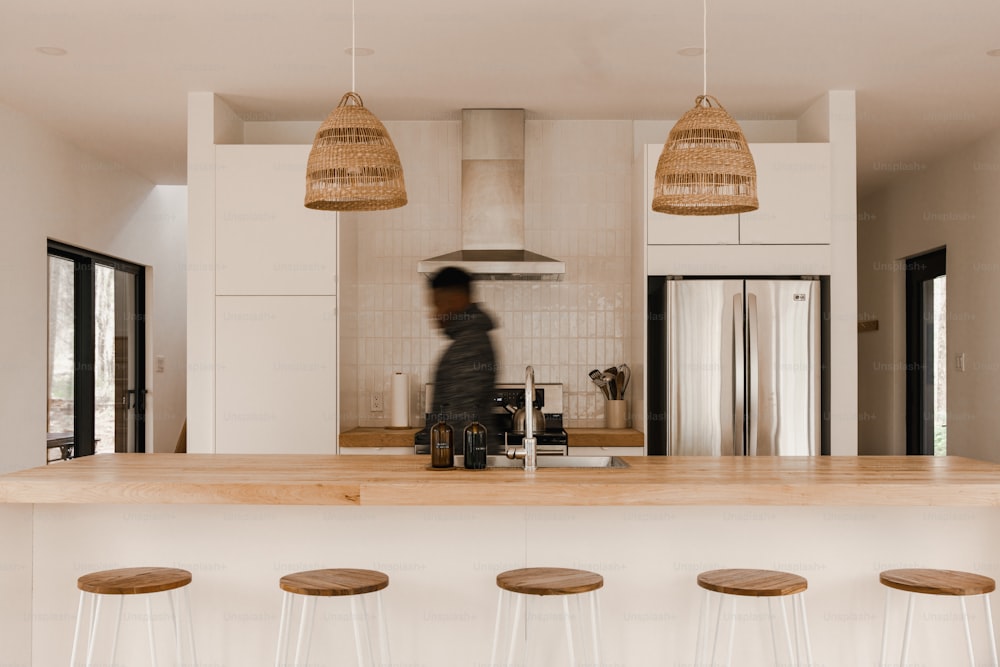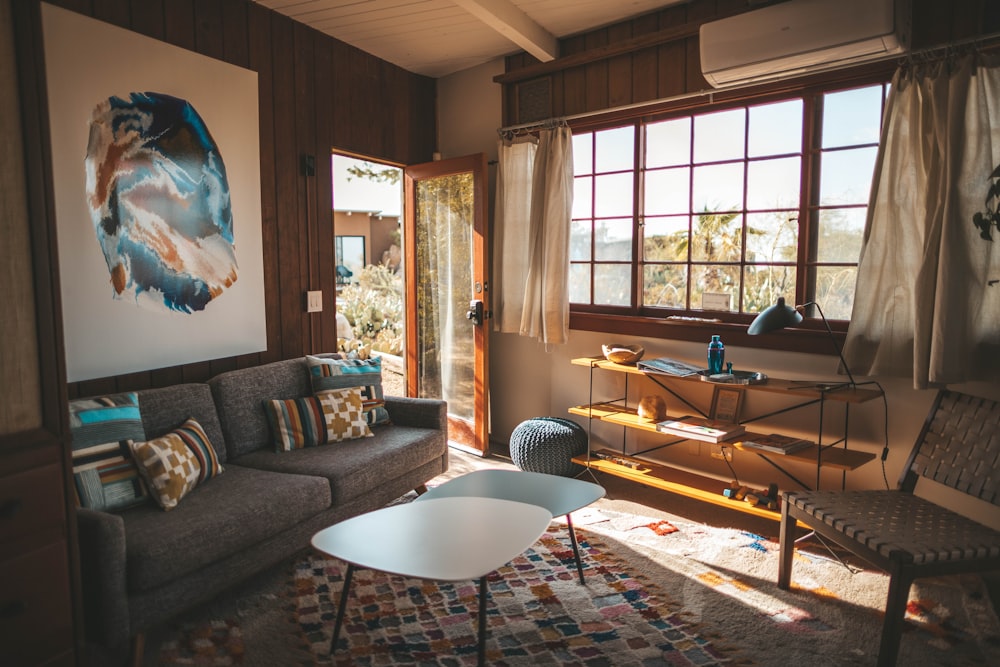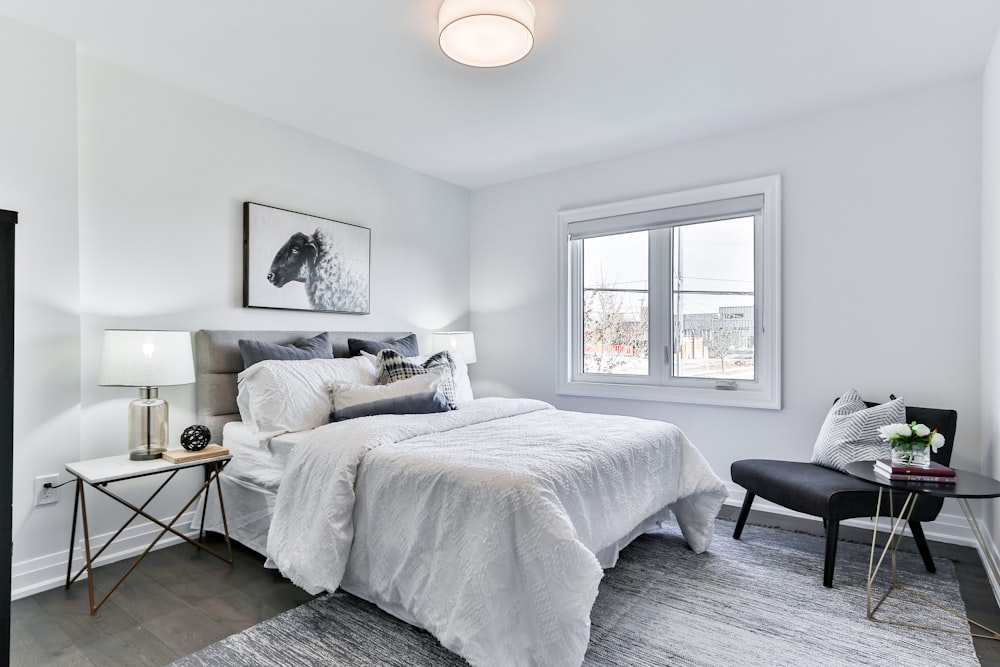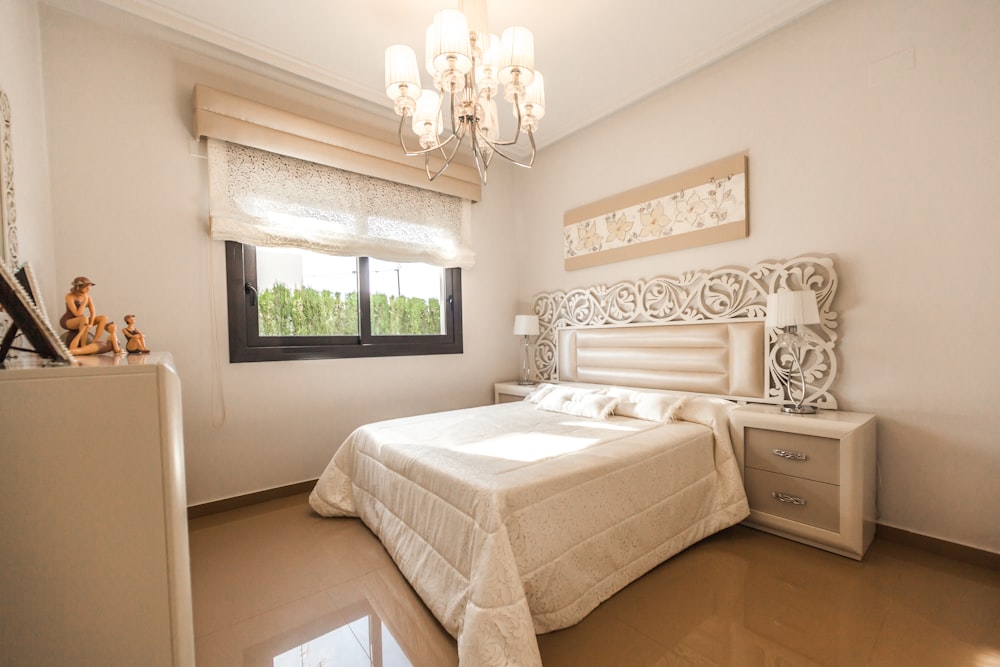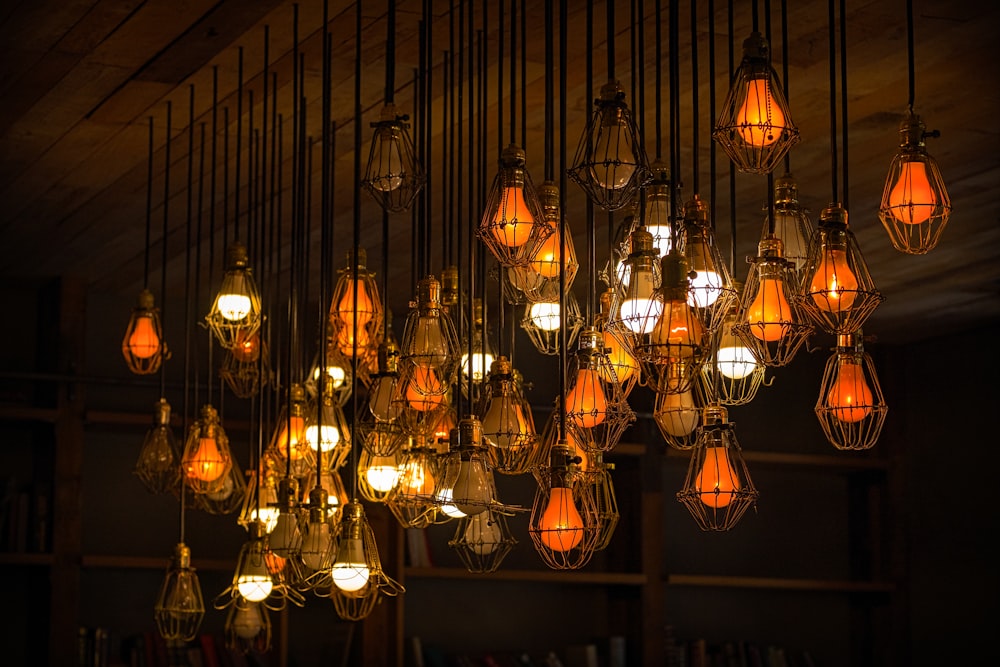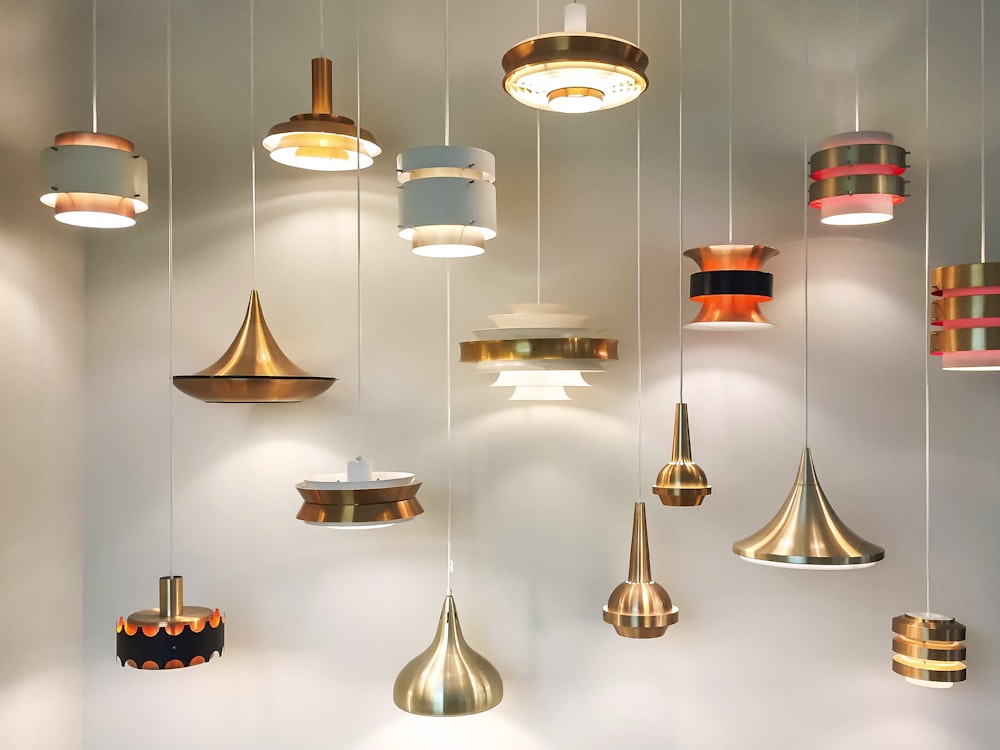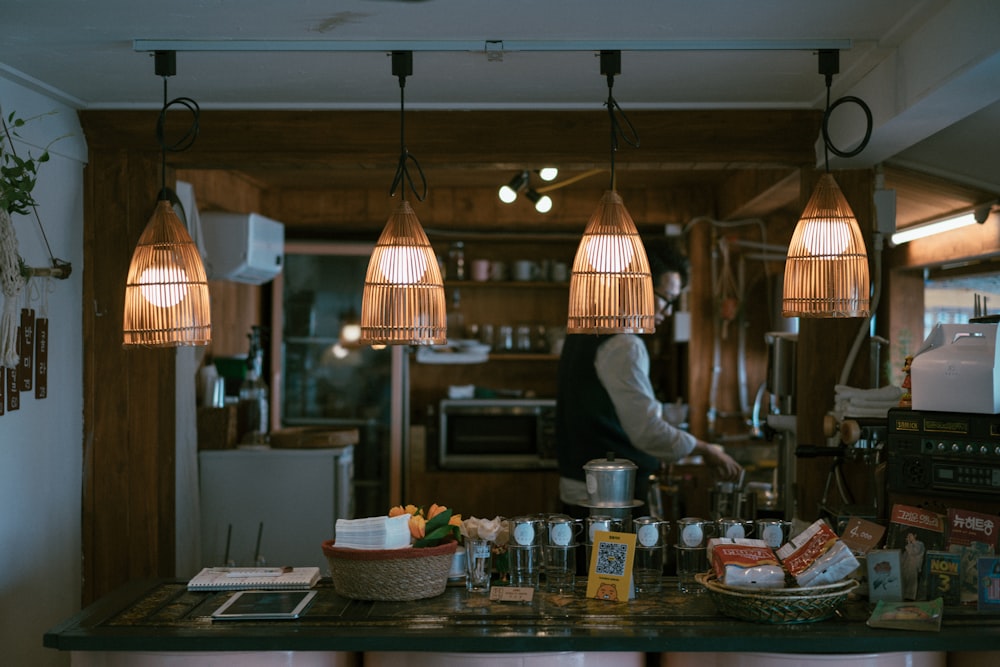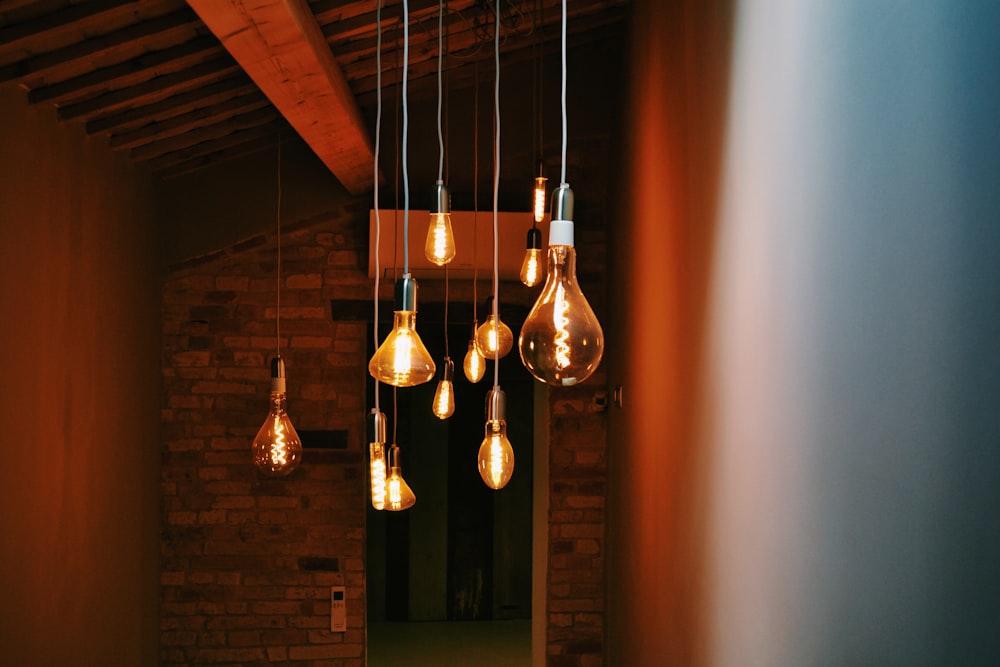Welcome to the world of minimalist lighting! If you’re looking to create a calming and serene atmosphere in your home or office, then minimalist lighting is the perfect choice for you. By using simple fixtures and focusing on functionality, minimalist lighting can transform any space into a peaceful haven.
Minimalist Lighting Ideas in 2023
In this article, we will explore minimalist lighting ideas in 2023 and its benefits, and how to choose the right fixtures. We will also delve into utilizing natural light, creating ambient lighting, accent lighting techniques, layering light for depth and texture, selecting the right color temperature and bulbs, as well as lighting tips for different spaces. Let’s get started on our journey to creating ambiance with simple fixtures!
Have you ever walked into a room and felt instantly relaxed and at ease? That’s the magic of minimalist lighting. Unlike elaborate and ornate lighting fixtures, minimalist lighting focuses on simplicity and functionality. It is all about creating a clean and clutter-free environment, allowing the light to be the center of attention. Minimalist lighting is characterized by sleek lines, neutral colors, and a minimalist design aesthetic. It not only enhances the visual appeal of a space but also promotes a sense of calmness and tranquility.
Understanding Minimalist Lighting
When it comes to minimalist lighting, less is definitely more. Minimalism is a design philosophy that focuses on simplicity, functionality, and clean lines. In the context of lighting, this means using simple fixtures that blend seamlessly with the overall aesthetic of the space. Minimalist lighting is all about creating a tranquil and uncluttered atmosphere while still providing sufficient illumination. Let’s dive deeper into what minimalist lighting is and its benefits.
What is Minimalism in Lighting?
Minimalism in lighting refers to the use of simple, understated fixtures that have a clean and unobtrusive design. These fixtures are often characterized by their sleek lines, neutral colors, and absence of ornate details. The focus is on the functionality of the light source rather than the fixture itself. Minimalist lighting aims to create a visually uncluttered space by seamlessly integrating with the overall design.
Benefits of Minimalist Lighting
Opting for minimalist lighting in your space can bring a multitude of benefits, both aesthetic and practical. Here are some key advantages of embracing minimalist lighting:
- Simplicity: Minimalist lighting helps create a clean and streamlined look, enhancing the overall minimalist design of the space. It allows other elements in the room, such as furniture and artwork, to take center stage.
- Enhanced Ambiance: With minimalist lighting, you can create a calm and soothing atmosphere. The simple and unobtrusive fixtures can provide soft, diffuse lighting that enhances the mood of the room.
- Versatility: Minimalist lighting fixtures tend to have a timeless appeal and can easily adapt to changing design trends. They seamlessly blend with various decor styles, making them a versatile choice for any room.
- Focus on Functionality: In minimalist lighting, the focus is primarily on the functionality of the light source. This means that the fixtures are designed to provide ample illumination without distracting from the overall design of the space.
- Energy Efficiency: Many minimalist lighting fixtures are designed with energy-efficient technologies, such as LED bulbs. By choosing these fixtures, you can reduce your energy consumption and environmental footprint.
By embracing minimalist lighting, you can create a serene and uncluttered space that promotes relaxation and tranquility. The combination of simplicity, functionality, and aesthetic appeal makes minimalist lighting a popular choice for modern homes.
Choosing the Right Fixtures
When it comes to minimalist lighting, choosing the right fixtures is essential. Minimalist lighting is all about simplicity and functionality. You want your fixtures to blend seamlessly with the rest of your minimalist decor while providing the necessary light for your space. Here are some tips for choosing the right fixtures:
Focus on Functionality
Minimalist lighting should not only be aesthetically pleasing but also serve a purpose. Consider the functionality of the fixtures you choose. Think about the type of lighting you need for each space and select fixtures that will provide the right amount of light. For example, if you need task lighting for reading or working, opt for desk lamps or adjustable wall-mounted fixtures.
Opting for Sleek and Streamlined Designs
In minimalist lighting, less is more. Look for fixtures with clean lines and a sleek, streamlined design. Avoid fixtures that are overly ornate or embellished. Instead, opt for fixtures with a minimalist aesthetic, such as simple pendant lights or recessed lighting.
Exploring Natural and Organic Materials
When it comes to choosing fixtures for your minimalist lighting, consider using natural and organic materials. These materials add warmth and texture to the space while maintaining a minimalist look. Some examples of natural and organic materials you can incorporate include wood, bamboo, or even woven rattan fixtures.
By focusing on functionality, opting for sleek designs, and exploring natural materials, you can choose the perfect fixtures for your minimalist lighting. Remember, the goal is to create a space that is both functional and visually appealing, so take your time to find fixtures that fit your style and needs.
Choose fixtures with clean lines and a sleek, streamlined design for a minimalist look.
Utilizing Natural Light
When it comes to minimalist lighting, one of the key principles is to maximize the use of natural light. Natural light not only illuminates your space but also brings in a sense of warmth and connection to the outdoors. Here are some tips on how to effectively utilize natural light in your home:
Maximizing Daylight
- Position your furniture strategically: Arrange your furniture in a way that allows natural light to flow freely into the room. Avoid placing large pieces of furniture in front of windows or blocking any sources of natural light.
- Use light-colored curtains or blinds: Opt for light-colored curtains or blinds that allow natural light to pass through while still providing some privacy. Sheer curtains or blinds with a light filtering feature are great options.
- Keep windows clean: Make sure your windows are clean and free from any obstructions, such as dirt or grime. This will allow maximum sunlight to enter your space.
Harnessing Views and Outdoor Lighting
- Embrace the view: If you’re lucky enough to have a beautiful view outside your windows, make the most of it. Arrange your furniture in a way that allows you to enjoy the view while still allowing natural light to shine through.
- Consider outdoor lighting: Utilizing outdoor lighting can greatly enhance the natural light that enters your home. Install outdoor light fixtures strategically to illuminate pathways and create an inviting atmosphere in your outdoor spaces, making it feel like an extension of your indoor space.
Remember, natural light not only brightens up your space but also has numerous benefits, such as boosting mood, increasing productivity, and reducing energy consumption. By embracing and maximizing natural light, you can create a more open, airy, and inviting ambiance in your home.
“Sunlight is the best disinfectant.” – Louis Brandeis
Creating Ambient Lighting
One of the key aspects of minimalist lighting is creating a warm and inviting ambiance in your space. Ambient lighting plays a crucial role in setting the mood and creating an atmosphere of coziness and comfort. Below are some techniques to help you achieve the perfect ambient lighting in your minimalist space:
Using Wall Sconces and Pendant Lights
Wall sconces and pendant lights are excellent choices for creating ambient lighting in a minimalist setting. These fixtures provide soft, diffused light that can enhance the overall aesthetic of your space. Instead of using multiple overhead lights, opt for a few strategically placed wall sconces or pendant lights to create a warm glow.
Incorporating Dimmers and Smart Lighting Systems
Dimmers are a fantastic addition to ambient lighting as they allow you to control the intensity of the light. By installing dimmer switches, you can easily adjust the brightness to suit your mood and create a more intimate setting. Smart lighting systems are another great option as they offer advanced controls and customizable lighting presets, allowing you to create the perfect ambiance with just a few taps on your smartphone.
Candles and Soft Lighting Options
Candles are an excellent choice for minimalist ambient lighting. They add a touch of warmth and create a relaxing atmosphere. Opt for unscented candles in simple candle holders that complement your space’s aesthetic. Soft lighting options, such as fairy lights or string lights, also work well in creating a cozy ambiance, especially in areas like bedrooms or outdoor spaces.
“Candles are magical. They create an intimate and serene atmosphere that is perfect for a minimalist space.” – Unknown
By incorporating these ambient lighting techniques, you can create a soothing and welcoming atmosphere in your minimalist space. Don’t be afraid to experiment with different lighting options to find the perfect balance that suits your style and preferences.
Accent Lighting Techniques
When it comes to creating a minimalistic ambiance with lighting, accent lighting is key. Accent lighting is all about highlighting specific features and creating focal points in a room. By incorporating these techniques, you can bring attention to artwork, architectural details, and other statement pieces. Here are some accent lighting techniques to consider:
Highlighting Artwork and Architectural Features
- Wall Wash Lighting: This technique involves placing fixtures, such as wall sconces or track lights, close to the wall to create a wash of light that highlights the texture and color of a particular wall or artwork. It can also be used to emphasize architectural features, like exposed brick or stone walls.
- Picture Lights: Picture lights are specially designed fixtures that are mounted above artwork to provide focused illumination. These lights help draw attention to the details and colors of a painting or photograph, creating a captivating focal point.
- Uplighting: Uplighting involves placing fixtures on the floor or low on the walls to direct light upwards. This technique is great for highlighting tall plants, sculptures, or architectural elements like columns or arches. Uplighting creates a dramatic effect and adds depth to a space.
Focusing on Statement Pieces
- Spotlighting: When you have a particular object in a room that you want to showcase, such as a unique piece of furniture or a decorative accessory, spotlighting is a great option. Spotlights can be mounted on the ceiling or recessed into the floor to direct a focused beam of light onto the object, drawing attention and creating a visual focal point.
- Track Lighting: Track lighting is a versatile option for accent lighting as it allows you to adjust the position of the lights along the track. This flexibility makes it ideal for highlighting a collection of artwork or objects displayed on shelves. You can easily direct the light onto each item, creating a cohesive look.
- Cove Lighting: Cove lighting involves installing light fixtures into recessed ledges or hidden alcoves to create a soft, indirect glow. This technique is perfect for accentuating architectural details on walls or ceilings, such as decorative moldings or ceiling beams. Cove lighting adds a touch of elegance and sophistication to any space.
Using Task Lighting
- Desk Lamps: Task lighting is all about providing focused illumination for specific activities. For example, in an office or study area, a sleek desk lamp can provide the perfect amount of light for reading or working. Choose a lamp with a minimalist design that complements the overall aesthetic of the room.
- Under Cabinet Lighting: In the kitchen, under cabinet lighting can serve as both accent and task lighting. It illuminates countertops and workspace, making food preparation easier, while also adding a touch of ambiance to the room. LED strip lights are a popular choice for under cabinet lighting due to their energy efficiency and versatility.
- Vanity Lights: In the bathroom, vanity lights are essential for providing adequate illumination for grooming tasks. Wall-mounted sconces or fixtures on either side of the mirror help eliminate shadows and create even lighting for applying makeup or shaving.
By incorporating these accent lighting techniques into your minimalist lighting design, you can add depth, focus, and visual interest to your space. Remember, the key is to maintain simplicity and choose fixtures that enhance the overall aesthetic without overpowering the room.
Also Read: Minimalist Design Principles : Key Elements for a Simplified Living Space in 2023
Layering Light for Depth and Texture
When it comes to creating a truly captivating and inviting space, layering light is a technique that should not be overlooked. Layering light involves using multiple light sources to add depth, dimension, and texture to a room. It can transform a simple space into a visually stunning environment that is both functional and aesthetically pleasing. Here are some tips on how to layer light for depth and texture in your minimalist design:
Combining Different Light Sources
One of the key elements of layering light is to combine different types of light sources. This can include overhead fixtures, task lighting, and ambient lighting. By blending these various sources, you can create a well-balanced and immersive lighting experience. Here are a few examples of combining light sources:
- Overhead fixtures: These provide general lighting for the entire room. Consider using recessed lights or track lighting to evenly distribute light.
- Task lighting: This is focused lighting that helps you perform specific tasks. Desk lamps, under-cabinet lighting, or reading lights are great examples of task lighting.
- Ambient lighting: This type of lighting creates a soft and diffused glow that fills the entire space. This can be achieved with the use of wall sconces, floor lamps, or even string lights.
By strategically placing these different light sources throughout the room, you can create layers of light that add depth and create a warm and inviting atmosphere.
Playing with Shadows and Highlights
Another way to add depth and texture to a space is by playing with shadows and highlights. This can be achieved through the use of indirect lighting or by angling the light sources in a specific way. Here are a few ideas to consider:
- Wall washing: This technique involves placing lights close to a wall and angling them upwards. This creates a soft wash of light that highlights the textures and shapes of the wall.
- Uplighting: Placing lights at the base of a wall or under furniture can create a dramatic effect by casting shadows on the ceiling or walls. This can add a sense of depth and dimension to the room.
- Using accent lights: Accent lights, such as track lights or picture lights, can be used to highlight specific elements in a room, such as artwork or architectural features. This creates focal points and adds visual interest.
By carefully considering the direction and placement of your light sources, you can create interesting shadows and highlights that add depth and texture to your minimalist space.
Remember: Layering light is all about creating a balanced and immersive environment. Experiment with different combinations of light sources and placement to find the perfect balance for your space.
“The quality of light by which we scrutinize our lives has direct bearing upon the product which we live, and upon the changes which we hope to bring about through those lives.” – Audre Lorde
By incorporating these layering techniques into your minimalist lighting design, you can create a space that is not only functional but also visually captivating. The interplay of light and shadow adds depth and texture, making your space feel warm and inviting. So go ahead, experiment with different light sources, and transform your space into a truly captivating environment.
Color Temperature and Bulb Selection
When it comes to creating the perfect ambiance with minimalist lighting, color temperature and bulb selection play a crucial role. Color temperature refers to the visual warmth or coolness of light, while bulb selection determines the type of lighting technology used. By understanding how these factors affect the overall feel of a space, you can make informed decisions that enhance your minimalist lighting design.
Choosing Warm or Cool Lighting
- Color temperature is measured in Kelvin and can range from warm to cool.
- Warm lighting (2700K-3000K) creates a cozy and inviting atmosphere, resembling the soft glow of candlelight or firelight.
- Cool lighting (5000K-6500K) emits a bright and energizing light that resembles daylight or fluorescent lighting.
- Consider the mood and purpose of each space when selecting color temperature. For intimate areas like bedrooms or living rooms, warm lighting can create a soothing and relaxing environment. In workspaces or kitchens, cool lighting can enhance concentration and visibility.
Opting for Energy-Efficient Bulbs
- LED (Light-emitting diode) bulbs are an excellent choice for minimalist lighting due to their energy-efficiency and versatility.
- LED bulbs are available in a wide range of color temperatures, allowing you to customize the lighting in each space.
- LEDs are long-lasting and have a lower environmental impact compared to traditional incandescent or fluorescent bulbs.
- Look for LED bulbs that are ENERGY STAR certified for optimal energy savings.
- Consider the wattage of the bulbs you choose, as it affects the brightness of the light. Lower wattage bulbs can provide a softer and more subtle lighting effect for minimalist spaces.
With the right color temperature and bulb selection, you can create a visually pleasing and functional lighting scheme that complements your minimalist decor. Experiment with different options to find the perfect balance of warmth, brightness, and energy-efficiency for each space.
Lighting for Different Spaces
When it comes to minimalist lighting, one size does not fit all. Each space in your home has its own unique lighting needs. By customizing your lighting to fit the specific requirements of each space, you can create a harmonious atmosphere throughout your entire home. Let’s explore some expert tips for lighting different spaces:
Living Room and Lounge Areas
The living room is often the heart of the home, where family and friends gather to relax and spend time together. When it comes to lighting this space, consider the following:
- Layered Lighting: Create a mix of ambient, task, and accent lighting to add depth and functionality to the space. Use a combination of floor lamps, wall sconces, and recessed lights to achieve the perfect balance.
- Dimmers: Install dimmer switches to have control over the intensity of light in the room. This allows you to create different moods and adjust the lighting according to the activities taking place.
- Statement Pieces: Incorporate a unique pendant light or chandelier as a focal point in the room. This can add a touch of sophistication and elegance to the space.
Bedroom and Sleeping Spaces
The bedroom is a sanctuary where you should feel relaxed and at ease. Consider the following lighting options for creating a calming ambiance:
- Soft Lighting: Opt for soft and warm lighting options, such as table lamps or wall sconces with low-wattage bulbs. This helps create a cozy and relaxing atmosphere, perfect for winding down at the end of the day.
- Reading Lights: Install wall-mounted reading lights or bedside lamps for convenient reading in bed. Choose fixtures that can be easily adjusted to provide focused task lighting.
- Indirect Lighting: Consider installing LED strip lights along the perimeter of your ceiling or behind headboards to create a gentle glow. This indirect lighting provides a soothing effect and adds a touch of luxury to the space.
Kitchen and Dining Spaces
The kitchen and dining areas are often the busiest parts of the home. Proper lighting is essential for cooking, meal preparation, and creating an inviting dining atmosphere. Consider these lighting options:
- Task Lighting: Install under-cabinet lighting to illuminate work surfaces and make food preparation safer and easier. Pendant lights or a chandelier above the dining table can provide a focal point and create an inviting ambiance for meals.
- Adjustable Lighting: Consider installing dimmer switches for the kitchen and dining areas. This allows you to adjust the lighting levels according to the tasks at hand, such as bright lighting for cooking and softer lighting for dining.
- Highlighting Features: Use accent lighting to draw attention to architectural features, such as a backsplash or a beautiful countertop. This adds visual interest and depth to the space.
Bathroom and Vanity Areas
Proper lighting in the bathroom is crucial for tasks such as applying makeup, shaving, and grooming. Consider the following lighting options for these spaces:
- Vanity Lights: Install vanity lights on either side of the bathroom mirror to minimize shadows and provide even, flattering light for personal grooming tasks. Avoid using overhead lights alone, as they can cast unflattering shadows on the face.
- Natural Light: If possible, maximize natural light in the bathroom by incorporating windows or skylights. Natural light not only promotes a sense of well-being but also enhances the overall aesthetic of the space.
- Waterproof Fixtures: Make sure to choose fixtures that are specifically designed for damp or wet environments. This ensures safety and longevity of your bathroom lighting.
Outdoor and Garden Lighting
Don’t forget about the exterior of your home when it comes to lighting design. Well-placed outdoor lighting can enhance security, create a warm welcome, and highlight your beautiful garden. Here are some ideas for outdoor lighting:
- Pathway Lighting: Illuminate walkways and pathways with recessed or stake lights. This not only guides guests safely to your door but also adds an element of charm to your outdoor space.
- Accent Lighting: Illuminate trees, shrubs, or architectural features with spotlights to create a dramatic effect. This adds depth and visual interest to your outdoor setting.
- String Lights: Create a cozy and inviting atmosphere by hanging string lights on your patio or pergola. This creates a magical ambiance for outdoor gatherings or simply relaxing under the stars.
Remember, the key to lighting different spaces is to tailor it to the specific activities that take place in each room. By taking into account the functionality, mood, and aesthetic of each space, you can achieve a well-lit home that is both functional and visually appealing. So go ahead, get creative, and let your lighting design shine!
Maintenance and Upkeep
Once you have installed your minimalist lighting fixtures and created the perfect ambiance in your space, it’s important to ensure that they are properly maintained and kept in good condition. Regular maintenance and upkeep will not only extend the lifespan of your fixtures but also keep them looking their best. Here are some tips for maintaining your minimalist lighting:
Cleaning and Dusting Fixtures
- Dust and debris can accumulate on your light fixtures, affecting their brightness and appearance. Regularly clean your fixtures to keep them looking sharp.
- Use a soft, lint-free cloth or a feather duster to gently remove dust from the surface of the fixtures.
- For fixtures with glass or crystal elements, use a mild glass cleaner to remove smudges and fingerprints. Avoid using abrasive cleaners that can scratch the surface.
Replacing Bulbs and Updating Wiring
- Over time, bulbs may burn out or lose their brightness. Replace them as soon as they go out to maintain consistent lighting.
- When replacing bulbs, make sure to choose bulbs with the same wattage and type as the ones originally installed. This will ensure the lighting remains consistent throughout your space.
- If you notice any flickering or dimming of your lights, it may be a sign of faulty wiring. Contact a licensed electrician to inspect and update the wiring if necessary.
Regular Inspections
- Conduct a visual inspection of your fixtures periodically to check for any signs of wear and tear, loose connections, or damaged components.
- Ensure that all screws and brackets are tightly secured to prevent any accidents or falls.
- If you notice any signs of damage or malfunction, consult a professional to assess and repair the issue.
By following these maintenance and upkeep tips, you can keep your minimalist lighting fixtures in optimal condition and enjoy their aesthetic and functional benefits for years to come. Remember, a well-maintained lighting setup not only enhances your space but also ensures a safe and inviting environment.
Also Read: Minimalist Furniture : Practical Tips for First-time Homeowners in 2023
Conclusion
In conclusion, creating a minimalist lighting design in your home is all about simplicity, functionality, and ambiance. By understanding the principles of minimalist lighting, choosing the right fixtures, utilizing natural light, and incorporating different techniques, you can transform your space into a peaceful and inviting environment. Remember to consider the color temperature and bulb selection, as well as the specific lighting needs of different areas in your home. And don’t forget about the importance of maintenance and upkeep to ensure that your lighting fixtures continue to enhance your minimalist living space for years to come.
At Minimalist Home Guru, we understand the importance of creating a calming and clutter-free environment. If you’re looking to enhance your minimalist home with the perfect lighting fixtures, be sure to check out our selection of sleek and streamlined designs that cater to your minimalist aesthetic. Visit our website at Minimalist Home Guru to explore our range of minimalist lighting options and find inspiration for your home. Let us help you create a space that is both functional and visually stunning with our carefully curated collection of minimalist lighting fixtures.
Frequently Asked Questions
- What are some minimalist lighting fixtures that can create ambiance?Some minimalist lighting fixtures that can create ambiance are: 1. Pendant lights, 2. Wall sconces, 3. Track lighting, 4. Floor lamps, and 5. Table lamps.
- How can minimalist lighting fixtures contribute to a minimalist aesthetic?Minimalist lighting fixtures have sleek and simple designs that complement the overall minimalist aesthetic. These fixtures eliminate unnecessary embellishments and focus on clean lines and functionality, helping create a minimalist and clutter-free environment.
- Are there energy-efficient minimalist lighting options available?Yes, there are energy-efficient minimalist lighting options available. LED lights are a popular choice as they consume less energy, last longer, and produce less heat compared to traditional incandescent bulbs. Additionally, dimmable lighting fixtures allow you to customize the ambiance while saving energy.
- Can minimalist lighting fixtures be used in any room?Yes, minimalist lighting fixtures can be used in any room. From living rooms and bedrooms to kitchens and bathrooms, minimalist lighting fixtures blend seamlessly with different interior styles and provide a modern and sophisticated touch to any space.
- How can I create ambiance with minimalist lighting fixtures?To create ambiance with minimalist lighting fixtures, you can experiment with different intensities and colors of light. Using warm-toned LED bulbs, installing fixtures at varying heights, and using dimmers can help you achieve the desired mood and atmosphere in your space.

